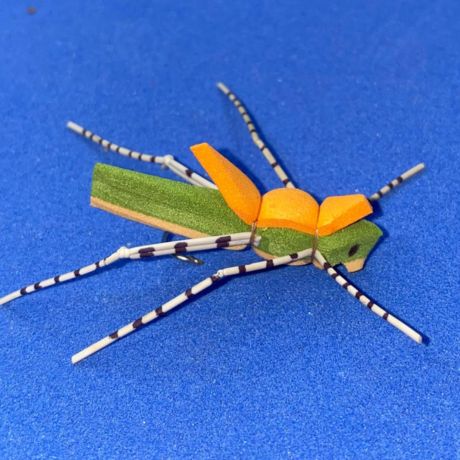The Morris Hopper is a popular terrestrial fly pattern designed to imitate grasshoppers, a common food source for trout, especially during late summer and early fall. This fly is highly effective when fished near the banks of rivers and streams, where grasshoppers are likely to fall into the water.
### Materials Used:
– *Hook:* Size 8 to 12, standard dry fly or hopper hook.
– *Thread:* Yellow or tan, 6/0 or 8/0.
– *Body:* Yellow or tan foam, cut into a hopper shape and tied to the hook shank to create a buoyant, realistic body.
– *Underbody:* Yellow or tan dubbing to add some bulk under the foam body and to create a more natural silhouette.
– *Legs:* Rubber legs, typically in yellow, tan, or barred patterns, tied on either side of the body to imitate the legs of a grasshopper.
– *Wing:* Deer hair, elk hair, or turkey quill segments tied over the back of the fly, extending past the body to mimic the folded wings of a grasshopper.
– *Head:* The foam is folded over at the front to create a small, rounded head, adding to the fly’s hopper-like appearance.
– *Indicator:* A small tuft of brightly colored foam or synthetic yarn on top of the head for visibility, making the fly easier to track on the water.
### Target Species:
The Morris Hopper is highly effective for targeting:
– *Trout (Brown, Rainbow, and Cutthroat Trout)*
– *Bass (particularly in streams and rivers)*
– *Panfish*
This fly is best fished with a dry fly presentation, often near the banks or in slower-moving water where grasshoppers might naturally land. The buoyancy of the foam body allows the fly to float well even in rougher water, and the realistic design often provokes aggressive strikes from fish looking for an easy meal.





